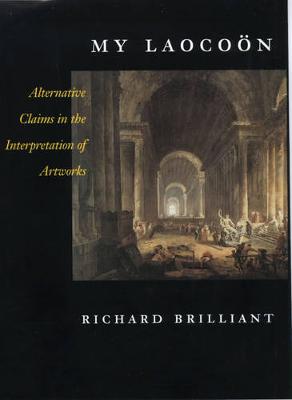The Discovery
1 primary work
Book 8
Analyzing the theme, provenance, and history of the Vatican Laocoon, Richard Brilliant traces the interpretation of this masterpiece of Greco-Roman sculpture through the ages, showing how these interpretations have shaped its reception. The Vatican Laocoon has suffered the vicissitudes of changing tastes, differing agendas of incompatible interpretations, and relegation to the margins of aesthetic preference. Several Laocoons are identified in this erudite and strikingly original study: the alleged, lost 'Greek original' the extant marbles sculpted in the first century; the sixteenth-century restoration and its impact; the eighteenth- and nineteenth-century topos of critical judgment; and, the twentieth-century re-restored artifact of ancient art. Yet, the Vatican Laocoon contains all of them in its obdurate self, and "My Laocoon" treats their history as a means of demonstrating an artwork's power to transcend its critical reception. Discovered in Rome in 1506, the Laocoon stimulated the imagination of sixteenth-century artists and humanists because of the sculpture's expressive exploitation of the human body under stress.
Variations in the critical reception of the Laocoon and disagreements about what the work represented, and how it did so, came to a climax when it became the victim of the controversy between Winckelmann and Lessing. Lessing's anti-Laocoon Laocoon, certainly one of the seminal tracts of aesthetic criticism, eventually won out. Ironically, this victory coincided with Winckelmann's invention of the history of ancient art, which differentiated between Greek and Roman artworks and bestowed upon the former a much higher aesthetic evaluation. This value-laden historiographical development seriously affected the Laocoon's reception, once scholars deemed it a 'Roman' work, perhaps even a copy of a lost Greek original. The Laocoon was doubly damned: it was Roman, not Greek, and its ontological credentials had been compromised, often to such a degree that the marbles were rendered almost invisible in the search for the Greek precedents. Re-restoration of the Laocoon in 1960 intensified its emotive power, but by then artists and critics had become indifferent.
Brilliant tells the Laocoon story with wit and erudition, and his selection of Laocoon illustrations masterfully demonstrates the influence that this work has exerted over the centuries.
Variations in the critical reception of the Laocoon and disagreements about what the work represented, and how it did so, came to a climax when it became the victim of the controversy between Winckelmann and Lessing. Lessing's anti-Laocoon Laocoon, certainly one of the seminal tracts of aesthetic criticism, eventually won out. Ironically, this victory coincided with Winckelmann's invention of the history of ancient art, which differentiated between Greek and Roman artworks and bestowed upon the former a much higher aesthetic evaluation. This value-laden historiographical development seriously affected the Laocoon's reception, once scholars deemed it a 'Roman' work, perhaps even a copy of a lost Greek original. The Laocoon was doubly damned: it was Roman, not Greek, and its ontological credentials had been compromised, often to such a degree that the marbles were rendered almost invisible in the search for the Greek precedents. Re-restoration of the Laocoon in 1960 intensified its emotive power, but by then artists and critics had become indifferent.
Brilliant tells the Laocoon story with wit and erudition, and his selection of Laocoon illustrations masterfully demonstrates the influence that this work has exerted over the centuries.
